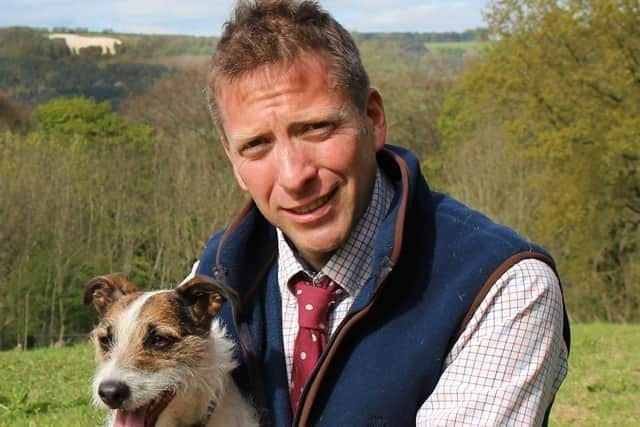The Yorkshire Vet, Julian Norton, on when alpacas become best friends
There are not too many vets who jump at the chance to see a camelid. Once, nobody really knew anything about these curious creatures from South America. Were they fluffy ponies or sheep with long legs? And what about the spitting? No vets or farmers had experienced this behaviour when alpacas arrived in Yorkshire twenty-five years ago. But now, small holders, vets and farmers are more accustomed to these novel creatures.
The main and routine job is castration. Males like to live in groups, but their natural tendencies are very driven by hormones. Their urge to mate, scrap, fight and even bite each other in the gonads is strong. Neutering solves this problem and evens out any bad tempers.
Advertisement
Hide AdAdvertisement
Hide AdMy most recent job was also all about the hormones. Although, to call it a job was stretching the truth somewhat. My role was to introduce two friends and four alpacas. Ian has a mobile farm, taking his animals to schools and educating children about their ways. He wanted babies (called cria) from two of his female alpacas. As he explained his plan, I had an idea. Another friend, Jackie, has an alpaca farm and a thriving business both breeding cria and taking visitors on alpaca treks. I made a few phone calls and a date was made.


A few weeks later, on a warm sunny afternoon, I sucked on an ice pop at Jackie’s as we awaited the arrival of the Ian and his females. I’d seen alpacas mating before and it’s a very interesting experience- different to most animals on the farm. The boys- Red and Indiana Jones- were already looking forward to their afternoon encounter. Indiana Jones, with bouffant hair and fluffy ears, looked like he’d been preening himself in front of the mirror for most of the day. If he had, it would have been wasted time because both females (Belinda and Humbug) were delighted to see them no matter what they looked like. There was a huge amount of high pitched chirping then both females immediately sat down on the floor; Humbug on a comfy bed of deep hay. Alpacas mate lying down and Red and Indi wasted no time positioning themselves on top.
The process takes up to an hour (!) and is a gentle scene of contentment. There is no commotion, no urgency and no vigorous thrusting. During the mating, Red even appeared to lean in and kiss Belinda on her neck and caress her with his front legs. There was little requirement for supervision, although after it is finished it’s important to make sure the boys don’t start fighting. Not wishing to be voyeuristic, we decided to leave them to it and retired for a cup of tea. Ian and Jackie related stories of the challenges and successes of their versions of farming diversification. I have to say, it is heart-warming to see how it is very possible to carve a life with animals in a non-conventional fashion.
We finished our tea just as a group of about fifteen alpaca trekkers returned. They all had smiles on their faces and had clearly enjoyed the relaxing walk. They’d be back for more. Meanwhile, in the barn Red, Belinda, Indiana Jones and Humbug were still at it. I couldn’t hang around. Evening surgery beckoned and I couldn’t be late. My excuse would have been too weird: “Sorry I’m late, I’ve been watching four alpacas mating.”